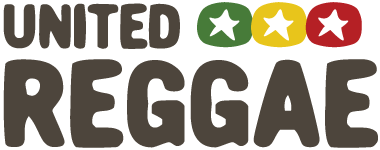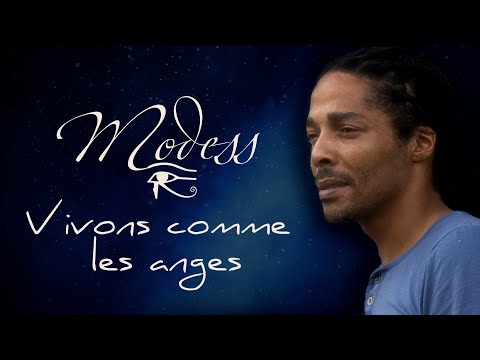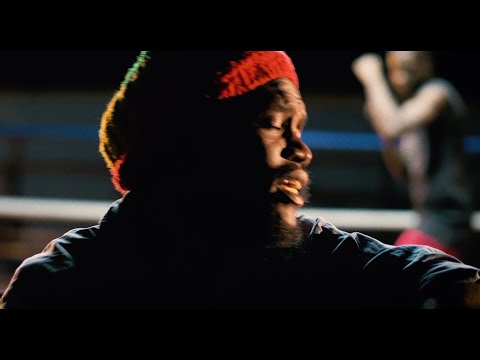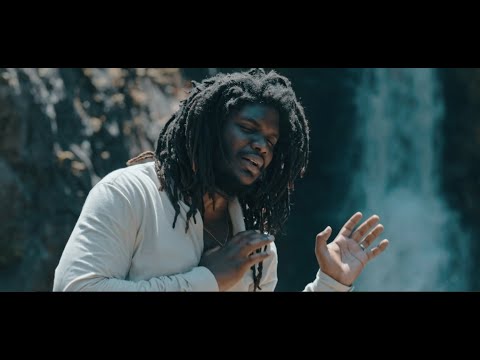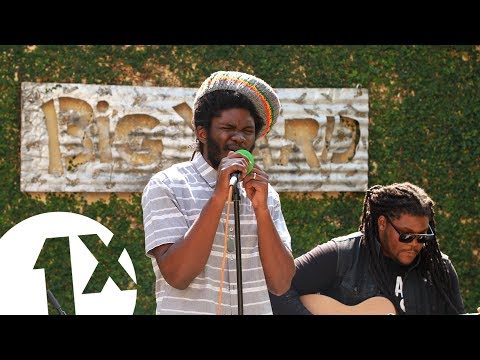Articles about reggae music, reviews, interviews, reports and more...
Interview: Inna de Yard
- Home
- Articles
- Interviews
- Interview: Inna de Yard

Interview: Inna de Yard
"Inna de Yard is a very special project. Even before this moment in time" - Cedric Myton
Sampler
Inna de Yard’s The Soul of Jamaica album was the result of a long and complicated process. The acclaimed album has recently seen an expanded edition surface with four additional bonus tracks, and next month, there will be a new Ken Boothe album issued in the Inna de Yard series. Here, many of The Soul of Jamaica’s album’s key participants discuss the genesis and evolution of the project and their particular roles in helping it reach fruition.
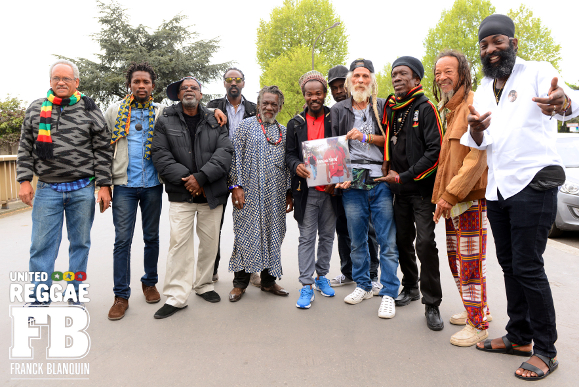
Winston McAnuff
Your son Kush mentioned that you had done an original acoustic project here in France.
Yeah, that’s what started Inna de Yard.
I need you to tell me about it.
I did an acoustic album, cause at the time, we had a couple albums to be re-released in France, Pick Hits To Click and Diary of the Silent Years, what man sold, the Inner Circle album, What The Man A Deal With, so I wanted to do something in between, so, I had some friends who had a studio and I went to see them and we just record an album with them, and I went back to my record company and I said, ‘Yo, this is my acoustic album,’ and they said, ‘But we could use some albums like these. Couple things we could do.’ I say, ‘Yeah!’ They say, who in Jamaica I know who could try to develop something like this, like what we did. So, when I was leaving Jamaica I went to Chinna’s house, he said he stopped playing the electric guitar, he didn’t want to play any electric instrument, so much anymore, he wanted to do some acoustic things, you know? So, I said, we could go and see him, to see if the thing, if he would be interested, and we went and he was interested and that’s how the thing started. So I just kept everything cool because, at that time, my career was already at a certain stage, you know? So I felt it would be, like, dishonest to really force myself in the project. So I allowed it to go for Cedric and Kiddus and them, my son, and many other youths to benefit, but I rekindled Cedric’s career as well, that, you know, so, it’s Inna de Yard but it has multi-effects, you know?
 I allowed it to go for Cedric and Kiddus and them, my son, and many other youths to benefit...so, it’s Inna De Yard but it has multi-effects
I allowed it to go for Cedric and Kiddus and them, my son, and many other youths to benefit...so, it’s Inna De Yard but it has multi-effects - Winston McAnuff
- Winston McAnuff
So the original album that you did, was that released?
No! It never come out. I have it.
How is it that you first came to France, and how did you first link with Makasound?
Well I came to France mainly from the 80s, I started regular in Bordeaux even before Reggae Sun Ska, so I went and did a lot of work there before that time. I went back and then I started coming back here in, like, 2000, but I met Romain and Nicolas, because I was babysitting for Earl 16, he went to Germany to do a show, cause I was staying with him all the time, cause you know my brother lives there, my nephew’s a big footballer, he played for Jamaica, actually, Toby McAnuff, but he used to be captain for Reading. So I was saying that to say…
About how did you first come to France and first meet Makasound.
Yeah, so, some guys came one time from France to Jamaica, and, you know, I met them and after, they invited me to come to France, so I went, I came and I went back, but this time now, after when I came back in 2000, what caused me to come back, I went to England to see what could happen to my career, and that’s where I was staying with Earl 16, but this work came up for Germany and he had a likkle problem with his family, with his woman, so he didn’t really have anyone to leave the children with, so I told him, ‘No, you can go, I will stay until you come back,’ so I stayed with him and during that stay, Patate called from France and said he was keeping a show with Alton Ellis, Earl 16 and Rod Taylor, if I wanted to come. So it took me a lot of work to actually get the visa, cause I had to go back to Jamaica, cause they wouldn’t give me the visa in England, so I went and I came and the first morning when I came, I was in the hotel, I heard my door knocked, and it was Romain and Nicolas from Makasound, with the pirated album from Enzo, that they pirated the album for 5 years; Inner Circle produced the album, but they gave me [back the rights to] the album many years ago. So when I came here, I found out that some people had pirated the album, for 5 years, you know, so we had to close that down to take away the album and my friends re-released it as well. Yeah, so that’s how I met them and we’ve been working ever since and trying to help other Jamaican guys as well.
In terms of this new album, The Soul of Jamaica project, what can you tell me about it? What about the location where you recorded it?
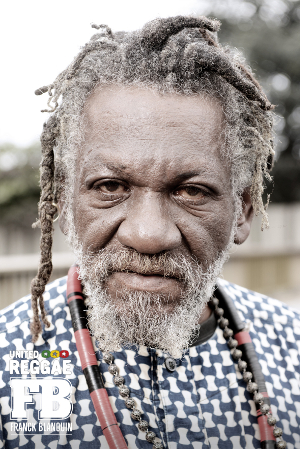 We did it in Stony Hill, cause Kiddus I lives there as well, and the place is beautiful, so we say, OK, yeah, we’re in the city but we’re not in the city. It’s really beautiful, I love that place.
We did it in Stony Hill, cause Kiddus I lives there as well, and the place is beautiful, so we say, OK, yeah, we’re in the city but we’re not in the city. It’s really beautiful, I love that place.
What about the track that you sing on the album.
‘Secret.’ Well the song came from this expression, we used to have this saying we used to say as children, ‘Can you keep a secret, keep it in your mind. Don’t laugh, don’t talk, don’t joke,’ if you know that. ‘Can you keep a secret, keep it in your mind. Don’t laugh, don’t talk, keep it til you die.’ Yeah, so it was coming from that, but because we like to use some topics that people are already subliminally abducted by, so we know, can you keep a secret, it is something that all Jamaicans know. So I used that and express, give an explanation for the secret, in a couple simple ways, but explosive.
So you’re coming off of a proverb.
Yeah.
Is this your first time touring with Inna de Yard?
Yeah! My first time.
The first show you played was in Lille?
Yeah. It was mad. At one point it sounded like it was my last show, like it was the last show of the tour. Yeah, I did a acoustic song at the end and, even some guy send some message to find out, which song that was, cause everybody got involved. It was super electric.
The first album that Makasound reissued for you, is that the album you recorded for Derrick Harriott in the late 1970s?
Yeah, yeah, yeah.
It comes out in 78?
Yeah, around there. Pick Hits To Click.
Then you did two other albums before you left Jamaica?
No, I did the Inner Circle album too, and then after that, I wasn’t really interested in recording again, so I was recording my album, and I had that album for 20 years, yeah, and that’s the album that start Makasound, but me and Cedric, half of that album was something Cedric was doing for EMI, you know, and the thing got split up, so I took my songs and I took some other songs and I made the album.
Are you based in France at the moment, or you’re in between?
I’m between but I spend more time in France than Jamaica, because you know, we just got selected in the Grammy, yeah, the first Jamaican, with the album before (with accordionist Fixi). Yeah. The first Jamaican ever to be selected in the Grammys. Yeah man, world music. Yeah! And even, you have accordion company here, cause it’s accordion music, and the accordion…
You mean, the one with Fixi?
Yeah. And the last accordion company, they said they were gonna close, but because of the success of the songs, they were planning to keep the company, so they just made Fixi, over a year of 1 and a half year now, Fixi went to their company to design a special accordion with his name inscribed in it. Mad! That’s a monster. Yeah, yeah, yeah. Yes, King David.
Kiddus I
What do you want to tell me about the genesis of the original Inna de Yard project?
How I see it, Winston McAnuff was a stimuli for this in the sense that he was here maybe 16, 17 years ago, trying to sell his music, he met Nicolas and Romain, they tried to market it, but they didn’t make any headway, and then they came back and said, ‘Hey, we wanna maybe start a label,’ so that was the inception, because through Winston, and Makasound now, seem to go further than just, the idea become more, come to Jamaica, record some stuff, you know? So he came by Chinna and I-and-I; before, we’ve been working for years, we’re together from Ras Michael and the Sons of Negus. I have known Chinna for years, so we were recording and when Winston would have come by, he would have seen us doing the same thing that was occurring afterwards for the Inna de Yard, playing our music, creating, you know, jamming, so he must have went back up to France and told the boys that, ‘Yeah, you know, me and them, Chinna, we were…’ So we started with the idea and I like the idea at the time, that this was not contaminated in the sense that Nicolas and Romain were fresh to the business and this was a new concept coming, so we gave our 100% behind it, because it seemed like it was us together, right? You got the management and the marketing and the promotion, which is what we have always seeked; I remember like 1971, 72, with Bob Marley and them, you know, years before, when I was doing real estate, a man told me that to do business to the world, you as coloured people, black people and stuff, where you can’t go, find a blue-eyed Barbie dove, who has the spirit. You find a Jew who has the spirit, where the Jew can’t go, the blue-eyed Barbie dove with go, where the blue-eyed Barbie dove can’t go and the Jew can’t go, we will go, right? So the idea now that, a union, with divisions for alternatively making music, which was positive, uplifting, right? That we could reach the world. Well, maybe by over-exceeding or extending themselves too quickly, Makasound went went down.
Like too many releases in a short space of time?
Yeah, too many, that area. But then again, the idea that vinyl’s just about dried up, CDs were drying out, so the music itself was going to a…and they got caught in the middle of that, right? Well, so from there, we recorded myself, Chinna recorded with some of the young men who were already there working with us; I recorded, Cedric, Diamonds, Junior Murvin, Viceroys and Linval Thompson were recorded in that era, and we started out, myself and Chinna in the first stages, together, for a number of shows before anyone else was brought in, you know? It was just myself and him, at the start.
 I said, ‘Yow. This is the ideal place to go procreate our music, right?’ And so it was. Because it’s all natural, the surroundings. Its nature right there in the midst of nature, nothing apart from just nature around on this mountain
I said, ‘Yow. This is the ideal place to go procreate our music, right?’ And so it was. Because it’s all natural, the surroundings. Its nature right there in the midst of nature, nothing apart from just nature around on this mountain - Kiddus I
- Kiddus I
Tell me about the actual recording of the album. Where was it? What was the process?
It was in a natural environment up in the mountain, there’s a valley, we’re on one side of the valley and across, like a mile valley across, there’s a mountain, this side, we are on one side, the ambiance of the place is natural, right? I have been living there now for about a year and couple months, so when the guys got in touch with me, looking at the surroundings, I said, ‘Yow. This is the ideal place to go procreate our music, right?’ And so it was. Because it’s all natural, the surroundings, wow, man, its nature right there in the midst of nature, you’re not, nothing apart from just nature around on this mountain. I mean, a huge river runs through the valley, about 900 feet down, 1000 foot down from us, right? And that is still on a mountain, so the river runs on a mountain, but in between it, these two mountains, which I-and-I is on one side, opposite the other side. The coolness, the rain, because you get a blessing most days.
Whose place is it up there and how did you end up there?
A friend of mine, actually this lady is originally from Trinidad, she grew up in America, but has been living in Jamaica for over 20-odd years, so her ex-husband, because he died some 5 years ago, built this place, right? And she is a very good friend of Mutabaruka’s wife, Jacquie, who, Jacquie’s been a friend of mine from in school. So Marie Bravo is Jacquie’s friend who I met many years ago, and when I went through a little thing…we had put on a festival in 2013, for the 70th anniversary, Rastaman Vibration, Ethiopian Christmas, and I ended up having to foot, like, say, 90% of the bills, which wasn’t supposed to have been, and it put me in debt, in a sense, you understand? So I gave up my house, which I was in, and so I took an apartment in that same premise; there’s a main house, there’s another house, there’s another place, that sort of thing, right? I’ve been there and it’s been a cave that I can go into and be away from anyone, everyone in this natural [environment]. I’ve written a number of songs in between, started writing some other stuff and been able to relax in an environment away from the maddening crowd in the city, you know what I mean?
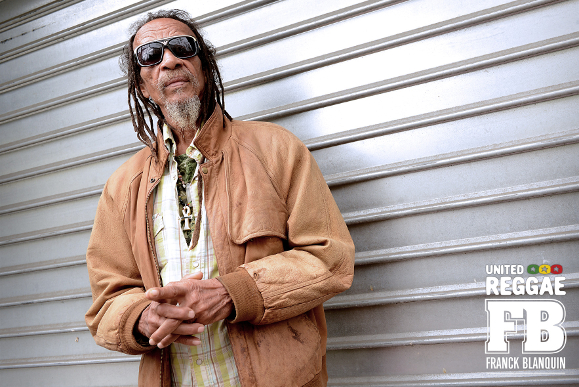
I saw on the little short promo film that there’s a lot of old vinyl in this place?
Oh wow, that’s one of the reasons why I… because her husband was a brother to Chris Stanley, who owned Music Mountain, he was a producer, has so much sound, PA, mixers, this that, in his place, huge, but the collection is, boy, it must be one of the biggest collections apart from the JBC, or it is few people who have that sort of collection, right? So in that ambiance and setting, it was already set up for music, right? So with that and the surrounding and how rustic it was, how peaceful and calm and natural it was, right? That me know say that any one of musicians who come up there, and sit down in it, it’s like you come home in a sense, you know? Like you come home. So it was a joy to do it there and we give thanks. You can see the end result of the project, you know? It speaks for itself.
Tell me about the tracks that you perform on this album.
Well, in 1979 I recorded a song for the title for my LP, which was called Jah Power Jah Glory, and Nicolas heard it, many, many, many years ago, and fell in love with it, cause I was told afterwards that he played it for almost a year.
This is an album you recorded that wasn’t actually released?
No, only two tracks were released, a track called ‘Love Child,’ and ‘Salvation.’ They were the only 2 tracks released of that. But I had the music and Nicolas asked why; I remember about 6 years ago, I can’t remember the festival, he asked me to do it, which I did. So when they came down, it was on his mind so I did that. And I did a copy of a re-do of a track called ‘Security In The Streets.’
Why that particular track?
Well if you recognise what is happening, even in Paris, 72 hours ago, you do need security in the streets, you understand. There’s a feeling of insecurity in the streets, and we need a feeling of security, and we don’t need the security forces to be doing this. I wrote that song for the Peace Treaty in 1978, right? And we said, ‘We don’t need security forces to do this, we just need a little bit of goodwill, love, understanding and goodwill, and we’ll make life a lot better for each and every one out there, for the get together spirit will make the people feel.’ So the world is in a state where we need a feeling of security in the streets, and it’s only going to happen with a mind-set, a resetting of the mind-set of the people. Equity and justice by your leaders, also. Very important. Because a track I do now, called ‘All Through The Darkest Days,’ a part says ‘the people’s problem is a feedback of society, where the people aren’t their main priority, for they are just misused minorities, misguided and confused, so if you’re looking for solution, then make love your only resolution, cause love will guide you through the darkest night.’ It’s a part of how, helped me to re-shape, and re-set, because the people can identify with the word that we speak from over here, and it cross through the barriers and the boundaries, and it’s heard and people can identify, because any spirit, sovereign soul, recognise truths, basic truths; there’s a certain resonance and a vibration that hits your heart, your mind, that, it’s like, you’re hungry and you know how you’re hungry, so you need to eat. It’s a natural thing, so when it comes, you’re gonna feel it. So when that hunger or thirst comes, it’s similar to recognising a truth.
Obviously, don’t want to bring any contention, but…
Oh, Chinna?
Yes. What’s the story?
It was his choice. Cause when, was it Nicolas or Romain? Called me, early last year to say they wanted to revive, and do this, they asked me for Chinna’s number, and I gave them Chinna’s number, and he was not keen, at the time, to become involved. That’s why we have Bo-Pee here right now, yet still, Bo-Pee was, if you look at the video movie of the art of making music, by Markus Hegler from Switzerland, before Inna de Yard came about, he was amongst us, and we filmed right up to when we were doing the Inna de Yard programme, because before that, I had been producing a LP called Tribute To Johnny ‘Dizzy’ Moore, which is released, right? It was I-and-I who produce that. My LP, Green For Life, was done in the same particular time, right? Bo-Pee was also a partner, along the line, while we were working there, before the Inna de Yard. So he’s still a part, seen? It’s just that he come in now because Chezi is not around. So it’s not like him was out ah bush. No, him was always closely associated with us, right through.
Cedric Myton
How did you first become part of Inna de Yard?
Well, Inna de Yard is a very special project. Even before this moment in time. The Inna de Yard started to be a very great project out of Jamaica, you know, even from Chinna Smith, although Chinna Smith is not on this one, but his name have to be still mentioned. Anyway, this particular project is a very special project also, for we have people like Ken Boothe, Lloyd Parks, Winston McAnuff, Kiddus, myself and a few more good people of the industry.
I want to wind you back to talk about your original involvement with the first incarnation of Inna de Yard.
It’s a relationship developed between Winston McAnuff, myself and Nicolas, Romain, and the whole Makasound crew, for it started in the Makasound basin there, and then it spread to Jamaica here, up by Chinna Smith; we get together and work very hard on the Inna de Yard programme, for it’s a very special, delicate programme. And from the beginning of time, I see the Inna de Yard gonna be a special event out of Jamaica because of the calibre of the people that involved, even from way back with Johnny Moore, Bobby Ellis, and all the big guns really, in the music, both musically and vocally also. But for my experience, I was brought to get involved of doing one of these Inna de Yard albums, it’s a great experience too, you know, to be in that solo-matic form. And it brings out things that you never know you have. So Inna de Yard on a whole is a showcase of cultural people and cultural music.
Who approached you to do that album?
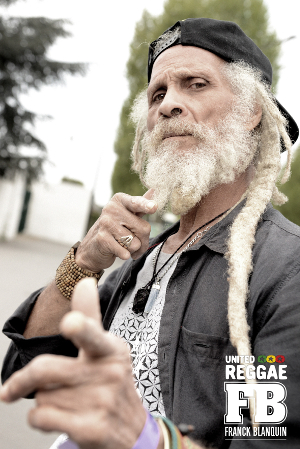 Nicolas came to me and say, “Well, we’re doing Inna de Yard,” but I was always around from the beginning of the Inna de Yard movement. Because I was in America for some time, and then I came back to Jamaica to really get serious, doing some work, you know? So when I came back, then I did a few albums, the Give Them The Rights album, that was one of them, for Young Tree, I also did an album at the time for Studio One, Mr Dodd, before he died there, and also a few others, an album on the Joe Gibbs label to, with Mr T, I did a few albums that year in Jamaica when I came back. So I was in a motion of doing lots of work, for I did 11 albums within that period of time, 11 albums, which, some of them, up to this day, I have seven albums which is not released. But, again, you know, if we find the right people, then we can deal with the right people about them. But cut a long story short, the Inna de Yard is a great event. I like the antique feel of the works, of the Inna de Yard works. Great.
Nicolas came to me and say, “Well, we’re doing Inna de Yard,” but I was always around from the beginning of the Inna de Yard movement. Because I was in America for some time, and then I came back to Jamaica to really get serious, doing some work, you know? So when I came back, then I did a few albums, the Give Them The Rights album, that was one of them, for Young Tree, I also did an album at the time for Studio One, Mr Dodd, before he died there, and also a few others, an album on the Joe Gibbs label to, with Mr T, I did a few albums that year in Jamaica when I came back. So I was in a motion of doing lots of work, for I did 11 albums within that period of time, 11 albums, which, some of them, up to this day, I have seven albums which is not released. But, again, you know, if we find the right people, then we can deal with the right people about them. But cut a long story short, the Inna de Yard is a great event. I like the antique feel of the works, of the Inna de Yard works. Great.
At some point, Makasound split into different directions, or something happened, and Inna de Yard label was wound up, but Chinna still kept sessions going at his place.
Yeah, we always, during the passage of time there, although the Inna de Yard programme with Makasound, we did also a tour with Mediacom, Inna de Yard, so that’s also another transition there, we did a tour with Mediacom as the Inna de Yard agent at that, again.
And that led to that other brief tour with Congos, Lee Perry, Max Romeo.
Yes, also those works are really great works, with Lee ‘Scratch’ Perry, Max Romeo, all over the world, Greece, France, all over. It was great.
So with The Soul of Jamaica, how did you become involved? Where was it recorded, what was the atmosphere like?
Well, I was approached again by the Makasound crew, they told me that they are coming to Jamaica to revive the Inna de Yard, but first, anyway, I get a rumour from Winston McAnuff, that, “Cedric, boy, some people want to do back something with the Inna de Yard.” I heard before the bomb really dropped. So, then, they say, well, we’re coming to Jamaica at that time there to record a new Inna de Yard album, yeah, and so the crew, which is Romain which is Nicolas, and other crew, we all get involved here in Jamaica, and many more crew, like an engineer, and Fixi who play the accordion with Winston McAnuff, big things happening with Fixi and Winston McAnuff in France, also Winston is a part of this project that’s going on right now. But anyway, working with the Inna de Yard, this particular project now, it’s a very intriguing programme. It’s very inspirational with all the new acts coming on. It’s not just me, Kiddus anymore and Kush; as you know, Matthew McAnuff also was a part of the big project, and during the passage of time, he passed away. But again, this particular programme, for the Inna de Yard, is a great programme, with Ken Boothe, Lloyd Parks, the new people, the Viceroys, it’s a great project.
You mentioned some new, younger talent, like Var from Pentateuch band.
Yes, some very talented young kids there. It’s good to see the new energy in the new people that come in, the young, and the legends also. Derajah is special also, for Derajah is Inna de Yard. As you look pon him, you say, “Derajah, Inna de Yard.” Number one.
Where was this album recorded?
It was up in the mountain of Stony Hill, up by one of Chris Stanley’s brothers, Chris Stanley who used to have that Music Mountain studio up in the hills there. Up in Stony Hill.
It was done at his brother’s place?
Yes, it’s down at his brother’s place we do all of these recordings. I’m not quite sure what Stanley his name is, but he’s also a Stanley there. It’s a great place up in the hills there, up in Stony Hill. It’s the same place that Kiddus live, the same home.
It’s got a lot of old vinyl?
Yeah, it’s like an archive, for real. And you see some of these photographs that, on the clippings. You’re gonna see lots of records and photographs all over the place, for even, last year, when I went, I find my son’s photographs on the wall over there, my first son, Jahbookie. So it’s an antique place, it’s a historical place too.
What about the actual recording? What musicians were there?
Oh, that’s another great part of the gist there. We have man like Robbie Lyn, we have man like Rice on the bass from the Uprising Roots band, we have Nambo, and Bo-Pee playing guitar, number one, great player. We have Bongo Joe also playing some drums, Kush, Alphonso, and a whole crew. The original Inna de Yard Crew, with just a few new ones.
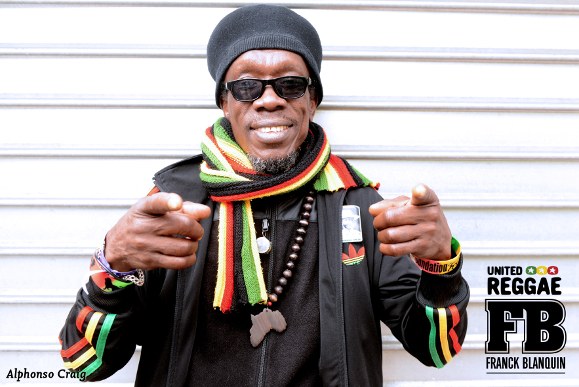
Some of the recordings were done in the open air?
Yes, outdoors, antique style. It’s a yard vibes. It’s a Inna de Yard vibes. It’s called Inna de Yard, so it’s a Yard vibes for real.
What songs did you voice?
I did two songs there, one called “The Rasta Government Song,” and another one called “Youth Man,” one of my favourite songs from the Congo Ashanti album that we did, (sings) “Hey youth man, don’t let them take your rights from you, your rights from you,” that old song there, and also a new song called “The Rasta Government Song,” for the Rasta need their own government in this time. That’s my motto right now too.
So “Youth Man” made the cut. It’s a very unusual Congos song, done with a French bass player in Jamaica.
Yes, all the recordings were done here in Jamaica at Aquarius and Dynamics studios.
What’s it trying to express?
The song? It’s just telling the youths to be careful, and don’t let the government take your rights, for the government always infringe on people’s rights, low wages, low payment and many little things there, so we always protesting, so this song is a protesting song, to tell the youths, “Be careful. Don’t let this man take your rights from you, stand up for your rights.” Just like Bob Marley would say, “Stand up for your rights.”
Why did you choose to record that one now?
No, it was not my request, to be honest. It was the request of the crew, of the production crew from France.
What is the difference between the recordings you made in Stony Hill and the recordings you made at Chinna’s place for Inna de Yard?
Well, to be honest, it’s not a difference, the only difference is the place. For we are the same people, the heartbeat, the same physical musical inspiration, and cultural movement, so nothing changes. The only change is the place.
What about the fact that Chinna was not present?
Well, that’s another part of the saga. It gives another man a light to shine. For now, Chinna is not with this project, you have a great guitarist like Bo-Pee now, come to shine his Bo-Pee light, which is great. He’s great, a very great musician from childhood days. We all grow up together, during the passage of time. All this 50 years of my music, we all work together. So it’s a project that, it’s not a one man project, it’s not just Chinna Smith’s programme alone, it’s a programme for all the people that work Inna de Yard. Both Kiddus, I myself, it’s a big project there. Winston McAnuff was always a part of it, Kush, Derajah, Kiddus, the whole crew. But one more thing, we big up Chinna Smith for the work that he has done all this time, for he’s the one that really bring Inna de Yard on the front page too, it’s not just we alone that did it. He was the one that do great works, and big him up. But now is the time for Bo-Pee to shine his Bo-Pee light.
Kush McAnuff
About the current Inna de Yard project, and you involvement with Inna de Yard more generally, how does it start for you? How did you become involved in the project originally?
OK, well, about 2000, daddy and Nicolas came to Chinna and bring the idea to Chinna, because Winston McAnuff is my father, and he did the first Inna de Yard here in Paris, with a guy called Julian, so they bring the idea to Chinna and he loved it, he say, ‘Yes, it’s a good idea,’ and I’m always round at Chinna, as a drummer, cause I’m a master drummer, I can play the trap set, and all drums. So after bringing the idea there, I played on the Inna de Yard album that’s released first, and then, I played on this same project, you understand? So, I was there from the whole project was a baby, until it’s grown into a big man right now.
 Winston McAnuff is my father, and he did the first Inna de Yard here in Paris, with a guy called Julian, so they bring the idea to Chinna and he loved it
Winston McAnuff is my father, and he did the first Inna de Yard here in Paris, with a guy called Julian, so they bring the idea to Chinna and he loved it - Kush McAnuff
- Kush McAnuff
You said your father had done the original in Paris before it started with Chinna?
Yeah mon, he did the first Inna de Yard and with a guy called Julian, his company is Omission.
I’m not familiar with that.
Yeah, most people don’t know, cause most people thought it started really at Chinna, but through we were there from the genesis of the thing, you understand? You’re getting to root of everything today.
Was it an album?
Yeah, man, he did an album with Omission, acoustic album in France, with Julian. He have a company called Omission. Yes. And they did an acoustic album, that daddy did make alone, so when Nicolas and Romain heard it, they came with the idea to approach Chinna with it, so approached Chinna with it, because Chinna’s house is the place in St Andrew Park where all musicians link up, they just go there and hold a vibes and stuff, you know? So we thought it was a good idea, because I was always there playing the drum, whether Niyabinghi or the drum set. So once they came with the project we just start on it right away, you know? Yeah mon.
Let’s talk about the current project and The Soul of Jamaica album, and your specific contribution to it.
Well, you done know, I sing on it; I played on Chinna’s albums as I tell you before, and this is the first time I’m going to be singing and performing too.
You didn’t go on tour with them before?
Yeah man, I tour with them, but I never sing as an artist, cause I’m an artist myself, my band is called the Uprising Roots in Jamaica. So now I’m performing on the album, The Soul Of Jamaica, I do the song called “Black To I Roots,” right? So this is the first time I’m going to be singing and not just playing drums, cause all the other tours that I went on, I was just playing drums, but now with the singing, I’m not just playing drums. But this new Inna de Yard project now, it’s like when you have a refined champagne, it’s more refined, so it’s more smooth and it tastes more sweeter and more smoother. It’s a good vibration. As a young youth, moving with Congos, Winston McAnuff, Kiddus I, Bo-Pee, Robbie Lyn, these are pioneers who share the foundation of the music, so we are really grateful that these young youth can move with them with this energy and light, the forefathers who set the thing.
Tell me a little bit about the recording sessions. Listening back to the album it’s really quite atmospheric, the way the sound comes across, when you hear the crickets and everything.
Yeah, I love that, the engineer’s really good. You know, the album, we did the recording in Stony Hill, and it’s so tranquil up there. Cause you know up there in Stony Hill, you have a huge river that people in Stony Hill don’t even know there’s such a huge river there. Yeah man.
So the space itself, does Kiddus live where it was recorded, or it’s a friend of his?
Yeah man, well, it’s a friend of his, but he lives there on the property too, because it’s a big property, with pool and everything, one of the most amazing things for me when I entered this property, they have found the first record, vinyl, pressed in Jamaica, they have that, that first record, to the last album that recorded in Jamaica. Yes, so it’s a whole room of records, I’m really grateful for that, cause you know a lot of people buying now the records, so to see that, I feel so good.
Derajah
How and when did you first become involved with Inna de Yard?
Well, I have been a part of Inna de Yard ever since, way long before the first Inna de Yard collective has been recorded. I have been a part of Earl Chinna Smith, Kiddus I and Cedric, just by communicating, playing music, jamming, rehearsing on a day-to-day basis, smoking chalice, being inspired and just living the life.
Who did you meet first? How did you first become connected with any of them?
Well I was introduced to Earl Chinna Smith first, because what happened is that I was living in downtown Kingston, on Chancery Lane, and that’s the same lane that Bob Marley used to have his record shop on, Gregory Isaacs used to have a shop also, down the street from where I used to live. And just making music downtown, I used to go to Rockers International on a daily basis, on Orange Street, and I used to go and check my brethren Mitchie who sells records at the record store, and Garth, that’s the brother of Augustus Pablo, he was at the record shop on a daily basis, and they used to be, like, “Oh, Jah Youth, wha gwaan?” Because I’m also called Jah Youth, for some reason I have been given this name by a elder. And they used to just like my vibration when I come to the record shop, because Mitchie used to play me records and after he play me records, then he would flip the records and then, start playing the version. Being in downtown, vibe-ing with the brethren, and writing songs, I was on Chancery Lane one day and a brethren said to me, “Jah Youth, listen! I am going to take you to meet a friend of mine, he’s a great musician and with your level of singing and writing songs, you need to meet someone professional,” so we take a taxi and we went.
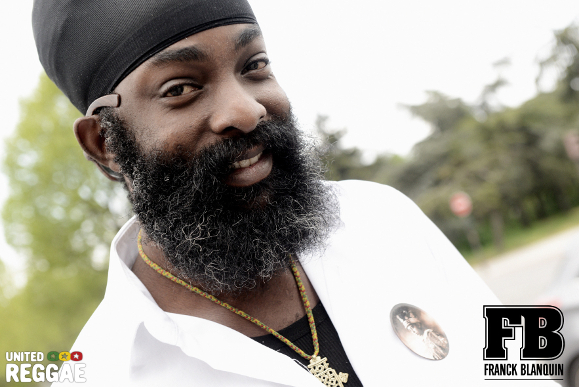
When was that, roughly?
That’s more than ten years ago.
So they heard you singing along to the version in Rockers record shop and said, you need to go to someone professional?
Yeah. Even when we were living on Chancery Lane, my brethrens used to just telling me that, “Man, you have some wonderful songs, I need to take you to a brethren of mine,” so one day, the guys, they take me, they took a taxi and travel me from downtown Kingston, straight to St Andrew Park, which is where Earl Chinna’s Smith’s place is, when I reach at Earl Chinna Smith’s house, I was introduced to him by my friends and he welcomed me with open arms and said, “Oh, yes, Jah Youth, take a seat,” and when I reached there, he was already playing his guitar. This man is the first man that I have ever seen constantly plays his guitar. He plays even if there is no show, he just rehearse and practise and practise, and while he was practising on that day and playing his guitar, I was struck by those chords, and I started to hum something until I started to sing something and I started to see his progression getting more deeper and his vibe is like, he started to feel my energy and I feel what he was playing, and tears start to run out of my eyes, you know?
So you had that kind of musical communication going from the very start.
It just happened like magic. Bam. Right there.
So through spending time at Chinna’s place, you got to know Kiddus and Cedric?
I started to go to Chinna on a regular basis, because the vibe was getting bigger, and that day, Chinna took me home, to my house, he take me straight to my house and make me, he drive me home, and we chat and chat and chat, and he was very…he said to me, “Well, let’s keep in touch, however often you can visit me, come and visit me, and let us continue to work on your craft.” By going there on a daily basis, because, you know, we have nothing doing at this time, we were just making music and having fun, so this is when I met Kiddus I, I met Cedric Myton, I met the Viceroys, I met the Mighty Diamonds, I met everyone. Yes I.
Moving forward a bit. There are a number of records and a tour. I think you recorded for some other people before you recorded for Inna de Yard.
Yeah. I recorded for Sugar Minott. I actually met Sugar Minott before I met Earl Chinna Smith. I went to Youth Promotion, met Sugar Minott, the vibe was very great. He welcomed me with open arms and it was wonderful.
Around 2005?
No, I think 2005 was when Inna de Yard was going on tour. Somewhere around that time Inna de Yard started to tour or something like that.
How much earlier did you meet Sugar?
I met Sugar way before that. If I met Earl Chinna Smith more than ten years now, and I met Sugar Minott way long before. I can’t pinpoint the date and time, because time moves so fast.
What did you record for Sugar?
I recorded a song called “Righteousness Just A Flow.”
Was that released?
Ah, you know what? I don’t think it has been released. But what I can tell you is that, I recorded 9 songs for Sugar Minott, with the intention of doing an album, when I was touring with Inna de Yard, and unfortunately I got news that Sugar Minott passed.
So one track I remember from the record and seeing you perform is “Be Careful.”
“Be Careful In This Time” with Matthew McAnuff?
Yeah, and the other one, “Ooh Yea Yah.”
Well what happened is that, the first song that I did on the Inna de Yard project was a track that is called, um, I’m trying to remember the name of the song because that song actually got the wrong name when we were making the list of names, but this song is a song that said, um…let me continue talking about the track with Matthew McAnuff. Matthew McAnuff, when he was recording his song, he came by Earl Chinna Smith, I was the man that was singing harmony on Matthew McAnuff’s song, and it was originally done, me singing, it was me originally singing harmony on the track, yeah. And that’s what happened. So I just sing harmony on the track originally, and this is why, when we tour, every time Matthew McAnuff sing, I have to take the mic to sing with him, because, we wanted to keep the same sound. “Ooh Yea Yah” was done on the second Inna de Yard album, Earl Chinna Smith and Idren Inna de Yard album, this was my second song that came out on that collective.
You did an album of your own for Chapter Two.
Yeah, the album was called Paris Burning, that was the independent album that came out on Chapter Two label, that was my solo album.
 The album was recorded up in Stony Hill, in the open air, upstairs, outdoors. The experience was wonderful. It was just happening like we were waving a magic wand and everything was just happening so majestically
The album was recorded up in Stony Hill, in the open air, upstairs, outdoors. The experience was wonderful. It was just happening like we were waving a magic wand and everything was just happening so majestically - Derajah
- Derajah
Tell me about The Soul of Jamaica. The actual recording, where did it take place? What was it like?
Well the album was recorded up in Stony Hill, in the open air, upstairs, outdoors. The experience was wonderful. We recorded songs with Lloyd Parks, songs with Ken Boothe, songs with the Viceroys, Cedric Myton, Kiddus I, we did some songs with Kush, the original drummer of Inna de Yard, singing this time, new and upcoming members of the Inna de Yard family, Var form the group Pentateuch, he was also invited to come and make a presentation. Bo-Pee who plays with Lloyd Parks and We the People, he also did a song, Lloyd Parks also did a song and in just a few days, maybe one week or five days we record over 20 tracks. So we were doing this, it was all magic. It was just happening like we were waving a magic wand and everything was just happening so majestically. This was wonderful because, these guys that came from France, they have never seen anything like this before, over 20 tracks recorded in just over 5 days, fully harmonised, musically accompanied well and everything was just bliss.
What about the song you voiced on that album, “Stone”?
Oh, the “Stone.” Well the “Stone” was originally recorded by Winston McAnuff, when I adapted the song, I bring some creativity to the table, so I put two original verse on it, so I just took, no, I put one original verse on it, so I took the chorus from Winston McAnuff, I incorporated one of his verse which is the first verse, and then the second verse, I wrote all the lyrics and just put my vibe.
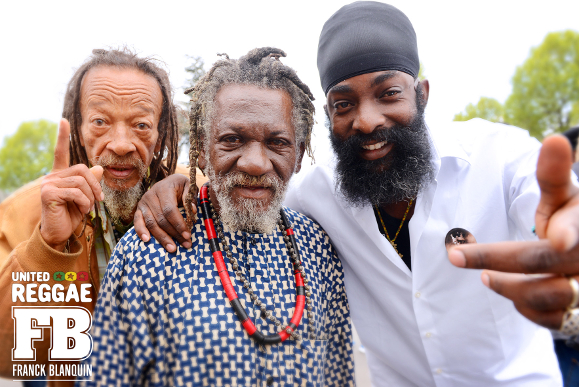
What’s the song trying to express?
I mean, it says, “The stone that the builder refuse will be the head cornerstone one day,” and I’ve seen that many a time, where people have been rejected and cast aside, and then they are most likely, they become the forerunners.
Were you talking about yourself, or more generally?
I’m talking about me also, because when I spoke, Winston McAnuff, I said to him one time, I said, “Winston, I’m gonna be honest with you, this song is like, you wrote this song for me,” and he laughed. Yeah.
So it’s the whole collective nature of Inna de Yard.
Yes I. Before you go any further, I want to address something, the first song that I did on the first Inna de Yard collective was a song that I said, “Yo A Life, ghetto youth stop from fight.” (Sings) “Yo, a life, ghetto youth stop from fight, holy Emmanuel he is the blessed Christ, yes a life, Vatican no stop exploit the poorer class of people every day and night, more life, ghetto youth stop from fight.” It was supposed to title “Ghetto Youth Stop From Fight,” but unfortunately it came out with the title “Well Ah Oh,” that was the title of the track.
Everybody noticed that Chinna is not part of this new album, and it wasn’t recorded in his yard, it was recorded up at Kiddus I’s place. So I just wondered if you have thoughts you can share about why that is and what difference that made.
Well, I’m gonna be honest with you. I am a musician, I play music, I do it from the heart. Earl Chinna Smith will always be loved by me, why, is because I can say that he’s my first professional music teacher, he has taught me so much. Inna de Yard, at Earl Chinna Smith’s place, that’s school for me, and I noticed at school, sometimes you don’t stay at one school too long, you move on and you graduate to higher learning sometimes, what I noticed about school, when you have a good teacher, sometimes you always go back and look back for that teacher, you know? This new album does not consist of Earl Chinna Smith playing or being on the album, I am not sure of what took place, why Earl Chinna Smith is not a part of this. I was asked to join back the team and with the love of music that I possess, I decide that I will do so, and here I am on this new Inna de Yard, Spirit of Soul, and it just amazing.
Will you be on the tour?
I will be on tour.
Is there anything else you want to tell me about this project?
I just want to say big respect to everyone that has been partaking in this project. I want to say big respect for me being selected and elected to be a part of Inna de Yard initially, from the get-go, I want to say thanks to all those persons who have been supporting my music over the years, and I want to also say that are plans coming with a new album, which is a solo album entitled The First Book, which persons can look out for. I did a few songs acoustically, Inna Di Yard style on my album, that I’m going to be presenting soon, so, songs like the “Stone,” songs like, some other songs that I sing for the Inna de Yard collection, those songs are originally taken from my new solo album, which is The First Book.
About the track that you contributed to on the album vocally, what can you tell me about it?
Well that song has been written for quite some time now, it has been modified by myself because the original creation was coming from Winston McAnuff, ‘Head Cornerstone,’ what I did, I did some amendment of the lyrics on the first verse, I did a whole writing construction for the second verse, which is, that’s just pure, my idea and stuff like that, so I told Winston that this song was sung for me, so I see it fit to remake the song, this is the first time I’ve ever re-recorded someone’s song, or added anything to anyone’s song and make it my own, because when I perform the song I actually own the song in terms of my own expression, my own interpretation and everything, but I never even knew that one day would have come where I’m recording a song that someone has penned before, because I told myself I wouldn’t be recording songs by people, I want to establish my own creativity and this is a wonderful venture, because it’s a beautiful song.
Was it someone else’s idea for you to do that song?
No. After listening to the song, my brethren was going through a situation, one morning I call him, 5 o’clock in the morning, his name is Mahlon Moving aka Debo Ras, he’s a prominent engineer, he’s also from the band Raging Fyah. I call him 5 o’clock in the morning and he wake up and like, ‘Oh, wha gwaan Derajah,’ then we start to talk about stuff, then he start to share some personal stuff that he was going through. I tell him I’ll call him back shortly, I hang up the phone, then I call him back, and I said, ‘Listen, this is what is happening, (sings): Stone that the builder refuse, shall be the head cornerstone one day,’ and he was amazed, he was shocked, he felt I was speaking to his situation and I was speaking to him, I was speaking to myself. When he heard that, he said, ‘Derajah, let me call you back,’ and I hang up the phone. Then he called me back, 5 minutes time, with his piano hooked up to his computer and to the studio, and he said, ‘Sing that line again for me, one more time,’ and I could hear him working out the chords in the background, because he did not even know about the version with Winston McAnuff, so he was putting together chords that was just pumping in his brain, to accommodate the vocals.
Var
Tell me about your contribution to The Soul of Jamaica.
Well, my contribution is the track ‘Crime,’ and it was just a beautiful experience for me to just be amongst the elders, learning and just being a part of the project. I mean, the recording process, it’s refreshing for me, because it’s natural vibes, it’s just outdoors, binghi vibes, so it’s organical, that’s what I am, soul music. So I couldn’t decline the offer at all. So I’m just happy to be a part.
The song is looking at some of the causes of crime in Jamaica?
Well, as you know, it’s something that is affecting the world, and you find that a lot of people who are committing these, what we would say, petty crimes, stealing, robbery, extortion, all of that, they are struggling people, so instead of making prisons, building prisons for them, why not build more hospitals, create more jobs? Develop the farming industry. Because Jamaica is, it’s sunlight, so the interest should be on that, instead of locking down people, because nobody will just get up and rob anybody for fun. People are just trying to find a way to live. It’s just our focus as government, what we put our interest in, to live. So give people job and food, and then you will see a decrease in crime.
How would you say what you did in Pentateuch is different from what you do in Inna de Yard?
Well, Pentateuch music is studio recording, Inna de Yard is outdoor recording, Pentateuch is more reggae, this is more niyabinghi. So that is the difference, but Pentateuch is beautiful, because it’s a collaboration of art, music, it’s not just me. It’s a collaboration of different musicians and people who paint.
Bo-Pee Bowen
With this project, Inna de Yard, you’re playing guitar, but also there’s a track that you sing. Tell us about his experience, about both of those aspects.
I was asked by Romain if I have any song that I could sing, and I sang this one for him, and they all loved the song, and so I play the song, which I have many more, because I wrote many songs and I also arrange, so that’s how I got it.
And it ended up being the one to close the album out.
Right.
So what was that experience like for you? Is it your debut as a singer on vinyl?
It’s my debut. It’s my debut. I have sang before, but never released. But it’s my debut.
What did it feel like to have it come out?
First it felt nervous, and secondly, I get to get over it.
Any other comments to make about Inna de Yard?
I see Inna de Yard as a breaking point for the world in the sense of trying to unite the world with love. That’s what I see Inna de Yard, and if people take a keen look and a keen listen, they would realise that we are trying to bridge the gap, we are trying, and we should think more of the spirituality of the thing, more than of the religion of the thing. The thing spiritual, not religious, but spiritual, because it started spiritually. God is a spirit, and those that worship him must worship in spirit and truth. It started spiritual. First the concept, it come in your mind, say you wanted a pair of shoes, first the concept come to your spirit and say, ‘I need a pair of shoes,’ then you go and get it.
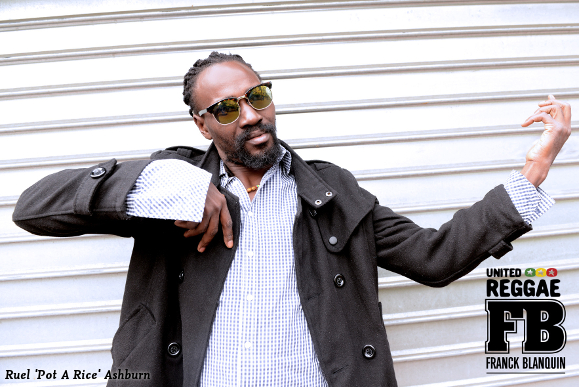
Read more about this topic
Comments actually desactivated due to too much spams
Browse by categories
Recommended Articles
Latest articles
Recently addedView all
© 2007-2026 United Reggae. All Rights Reserved. Reproduction in whole or in part is prohibited. Read about copyright
Terms of use | About us | Contact us | Authors | Newsletter | A-Z
